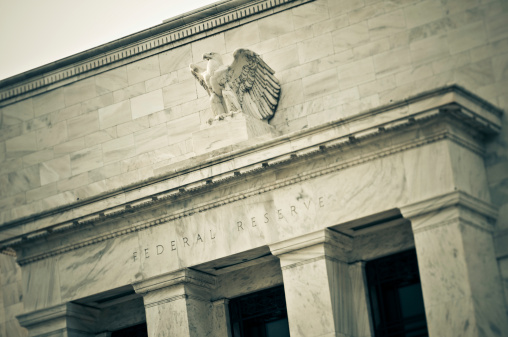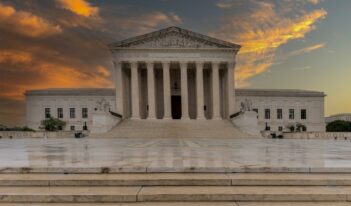
Central bank discontinues program of buying financial assets from commercial banks and returns focus to managing interest rates.
The Federal Reserve recently announced the end of its practice of purchasing financial assets from commercial banks—known as quantitative easing—that began as part of the Fed’s response to the 2008 financial crisis. The move represents a vote of confidence in the economy.
In its press release, the Fed cited a number of reasons for ending its asset-buying program, including the “moderate pace” of economic expansion in the U.S., “diminishing underutilization” of resources, rising household spending, and increasing business investments.
Quantitative easing is a monetary policy central banks use to stimulate economic activity. In short, it increases the money supply by giving financial institutions ready access to capital, encouraging lending and liquidity. To achieve this, central banks purchase financial assets from commercial banks. Banks will then remove many of these assets from the marketplace, decreasing their supply. This boosts their value and yield (the amount that purchasers receive back from their investment). It also increases the nation’s monetary base, which can boost commercial lending, consumer demand, and consumer spending.
The Fed relied on quantitative easing as a main component of its effort to repair economic losses sustained during the 2008 financial crisis.
Traditionally, the Fed holds almost entirely U.S. government bonds, which are considered a safe, neutral asset. To supplement its monetary policy strategy, the Fed turned to quantitative easing—normally a backup plan when low interest rates do not do enough to stimulate economic activity—and began purchasing mortgage-backed securities from commercial banks.
The Fed intended that its program would flood money into the housing market, increasing demand for mortgages and making it easier for people to acquire home loans. From 2008 to 2014, the Fed accumulated nearly $4.5 trillion in assets—a record level.
The Fed’s decision to end quantitative easing signaled confidence that the program has helped to stabilize the financial system and stimulate the broader economy during the last few years. Members of the Board of Governors voted 9 to 1 to end the program, citing “a substantial improvement in the outlook for the labor market since the inception of [the] current asset purchase program.” The Board explained that its decision to end the program was based in part on the Federal Open Market Committee’s perception that there is “sufficient underlying strength in the broader economy to support ongoing progress toward maximum employment in a context of price stability.”
The announcement was not a surprise. Many analysts think quantitative easing has helped the recovery, and the Fed has been winding down its asset purchases over the past year. Indeed, the lack of market backlash illustrates the public sentiment about quantitative easing at this stage in the recovery. Previously, Fed statements only hinting at a drawback of quantitative easing reverberated through trading markets.
For example, in June 2013, stock markets fell about 4.3% over three days when former Federal Reserve Chair Ben Bernanke announced that the Fed was merely considering pulling back on quantitative easing in the event the economy continued to grow. This time, markets remained stable in the wake of the announcement, and currently, stocks are trading at the same level they were before the financial crisis.
Despite its apparent success, quantitative easing was not without its detractors. Some observers think the program arbitrarily picked winners and losers by favoring certain types of investments—in this case, housing market investments. Other commentators have argued that quantitative easing contributed to inequality by making money more easily available only to those who have it, including financial institutions, strategic investors, and higher-earning individuals.
The long-term effects of the decision to end quantitative easing are unclear. While its asset-buying program may have become less necessary, the Fed has a historically high balance sheet. Before it began buying bank assets in 2008, the Fed held between $700 and $800 billion in treasury notes. Over the last six years, it has accumulated $4.5 trillion in assets. The Fed’s unusually high balance sheet limits its ability to rely on quantitative easing in the event of another crisis. And if the Fed ever decides to sell those assets, the result might be to oversaturate an already congested market in mortgage-backed securities.
But the Fed has not announced plans to sell its assets. If anything, it is more likely to start with raising interest rates. Although the Fed described its plans to keep interest rates low for a “considerable time”—between 0 to 1/4 percent for federal funds—it will continue to adjust these rates in response to new economic activity, which cannot be easily forecasted.



